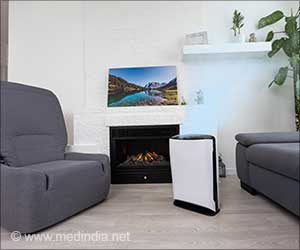. They suspect mold as the cause of their symptoms, but cannot locate any. Some unsympathetic colleagues claim to feel perfectly well, dismissing any potential problem.
According to Sauvageau, an occupational hygienist with CONN OSHA, the actual culprit is not mold, but rather dust. This comprises minuscule particles such as fibers, skin cells, insect fragments, pollen, cobwebs, and dirt that settle on surfaces throughout the office.
Poor Indoor Air Quality can have a Negative Impact on Health
The issue of indoor air quality is on the rise, exacerbated by budget constraints leading to reduced custodial staff, time-constrained workers neglecting their workspaces’ cleanliness, and an increase in extreme weather events causing leaks and flooding. Insufficient air circulation and blocked heating systems further worsen the situation (1✔ ✔Trusted Source
The Inside Story: A Guide to Indoor Air Quality
Go to source
).
Advertisement
The impact is significant, with the Environmental Protection Agency estimating that poor indoor air quality costs billions of dollars yearly due to decreased productivity and increased healthcare expenses. A 2010 study by the Lawrence Berkeley National Laboratory even concluded that enhancing workplace environments could save businesses around $300 per employee annually.
Over the past 14 months, Sauvageau has investigated 20 complaints related to compromised air quality in workplaces, where mold was suspected. Of the numerous samples he collected, only one had noteworthy mold levels. Solutions require a collaborative effort from all office stakeholders, a shift that hasn’t been necessary before, according to Paula Schenck, assistant director of the Center for Indoor Environments and Health at the University of Connecticut Health Center. “It takes a team,” she emphasized.
Ken Tucker, director of CONN OSHA, stated that everyone, including workers, union representatives, building owners, managers, and cleaning staff, needs to be committed to the solution. Larry Dorman, spokesman for Council 4 of the American Federation of State, County, and Municipal Employees in New Britain, remarked on the growing concern about air quality in the workplace, labeling it one of the hidden dangers.
Frequently, employees need to pay more attention to air quality encompasses more than just mold levels. Schenck emphasized the importance of considering ventilation, moisture, and dirt/dust. While mold is indeed a serious concern, people should first investigate more obvious factors if they cannot detect a moldy odor, observe water stains, or are unaware of any dampness.
Dust’s pervasive nature prompted Sauvageau to dedicate an article in CONN OSHA’s May newsletter to the topic. Its irritating effects vary depending on individuals’ tolerance levels for mites, pollen, and spores in accumulated dust. Those sensitive may experience allergic reactions, while others may not perceive any issue. Additionally, one’s workspace location can exacerbate symptoms.
Ray Cassarino, owner of Cassarino Commercial Cleaning, has encountered cases where employees, particularly at reception desks, experience sneezing fits due to dust accumulation. He inspects the equipment and observes dust clumps to gauge its duration. Cassarino often uncovers surprising amounts of accumulated dust.
Itchy eyes, a runny nose, and headaches can be attributed to inadequate ventilation, as well as dust and dirt, which irritate the respiratory system. People typically feel relief upon leaving the environment. Similar to asthma symptoms, breathing difficulties can be challenging to trace back to the building. Some contaminants in dust, when exposed to it for extended periods, can also induce asthma -like symptoms.
Sensitivity and exposure play crucial roles. Schenck recounted a case where a woman complained about a vent blowing air onto her desk. When the custodian redirected the airflow with a piece of plastic, the woman fell ill, perplexed because the air was no longer directed at her. An examination revealed the plastic was laden with bacteria and mold.
Is Dust Piling up in Your Office?
In workplaces, Sauvageau often encounters congested offices and cluttered desks. Storage spaces are inadequate, leading to supplies and equipment piling up. Maintenance and cleaning of heating and air conditioning equipment are neglected, and the areas behind desks and heating units are left dirty. Furniture placement obstructs ventilation or complicates cleaning efforts. Employees resist moving anything on their desks or shelves, further hindering cleaning.
Certain buildings, originally designed for different purposes like hospitals or factories, now serve as courthouses, town halls, and offices. Balancing ventilation and maintaining cleanliness can pose significant challenges. Cassarino pointed out that many companies have cut costs for custodial services, resulting in unrealistic expectations regarding what can be achieved with limited resources.
Sauvageau emphasizes the need for employers to recognize that poor air quality can impact employee attendance, productivity, and morale. Some individuals who contacted CONN OSHA were facing disciplinary measures due to excessive absences resulting from their illnesses, which included sinus infections, bronchitis, allergies, and asthma.
Balancing temperature preferences and airflow tolerances among employees can be challenging for building managers. Generally, reducing ventilation is not advisable, as it allows contaminants to accumulate. The use of scented air fresheners is also discouraged, as they can irritate some individuals.
This, according to Schenck, exemplifies the “joint responsibility” required to establish a healthy work environment. Workers should be vigilant about their personal spaces and ensure that their actions do not compromise air quality for their colleagues.
How to Prevent Sneezing and Coughing at Workplace?
If experiencing issues, Following is recommended:
-
Taking prompt action, as prolonged exposure can lead to chronic symptoms - Documenting and tracking symptoms, noting when they occur and where
- Addressing the issue through supervisors and union representatives
- Consider a thorough office cleaning, as symptoms often improve when dust is the problem
- Managers can contact the Occupational and Environmental Health Center for assistance
“Breathe Clean Air for Healthier Tomorrow.”
Reference :
- The Inside Story: A Guide to Indoor Air Quality – (https:www.epa.gov/indoor-air-quality-iaq/inside-story-guide-indoor-air-quality)
Source: Medindia



